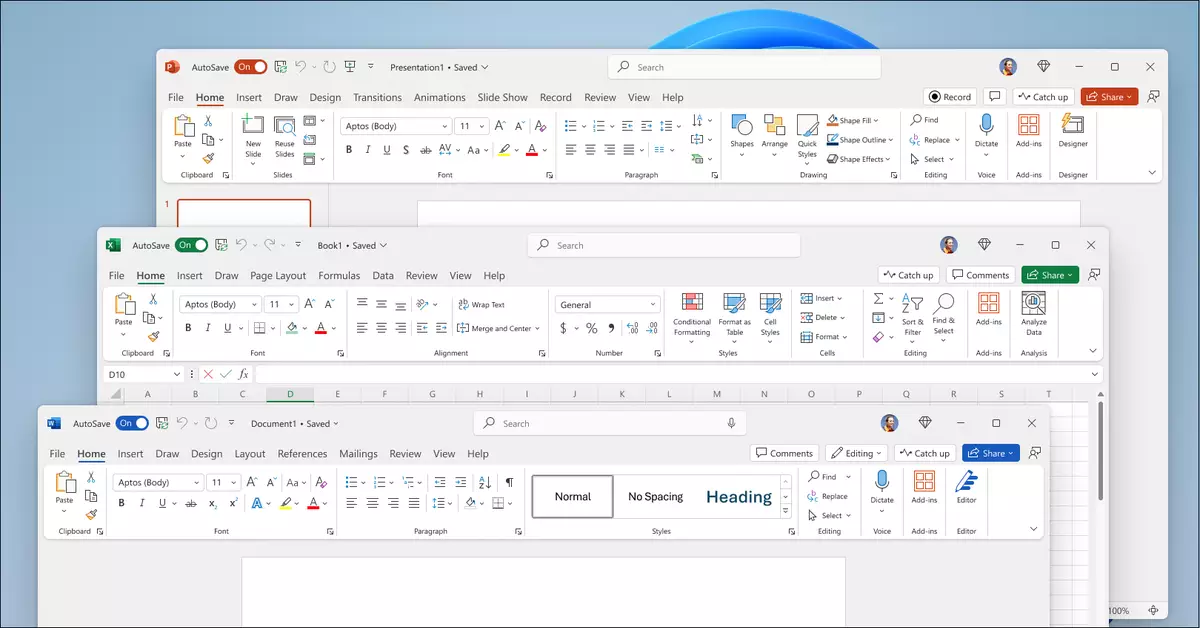Microsoft has recently made a significant move by launching Office 2024, a standalone productivity suite tailored for users who prefer not to engage with the subscription model of Microsoft 365. This latest iteration is aimed at both consumers and small businesses, offering long-standing favorites such as Word, Excel, PowerPoint, OneNote, and Outlook. Available for both Mac and PC platforms, Office 2024 seeks to reinvigorate productivity by incorporating updates that were previously exclusive to the subscription model.
One of the most striking aspects of Office 2024 is its comprehensive upgrades, not just in terms of core functionality but also regarding user experience. This release follows the prior standalone version from 2021, and sets a new standard with improvements across essential applications. The most noticeable update is the integration of Microsoft’s Fluent Design principles, which harmonizes the visual elements of Office with the aesthetic of Windows 11. Each application benefits from this design overhaul, cultivating a more cohesive and modern user experience.
Excel emerges as a standout in Office 2024, boasting new functionalities that facilitate sophisticated data manipulation. Among the notable enhancements is the introduction of functions that leverage text and array capabilities within worksheets, as well as an IMAGE function that retrieves visuals directly from the web. Furthermore, Excel now supports Dynamic Arrays in charts, which means that charts can be updated automatically—this is a revolution for users who regularly update their datasets.
Moreover, there are claims that general speed and stability improvements have been implemented, which could significantly elevate workflow efficiency for professionals relying on Excel for data analysis. Thus, Excel 2024 positions itself as a powerful tool for data-driven decision-making.
PowerPoint also steps into the spotlight with exciting new features designed to enhance the presentation experience. The introduction of the “cameo” feature allows users to embed a live camera feed directly into their slides, promising a more engaging interaction with the audience. The addition of a recording studio enhances this further, enabling seamless integration of narration, animations, and inking, not to mention the option to add closed captions to audio and video content, making presentations universally accessible.
These features collectively push PowerPoint beyond a mere presentation tool, transforming it into a dynamic storytelling platform capable of engaging diverse audiences.
Outlook 2024 introduces significant enhancements particularly in the realm of search functionality, providing users with more relevant results for their correspondence and attachments. Improvements extend to meeting organization; users can now streamline their schedules by automatically shortening meeting durations. Additionally, Mac users benefit from customizable swipe gestures, allowing for a more tailored experience when navigating through their inboxes and calendar events.
Microsoft Word has taken steps to improve user interaction, introducing features that allow users to easily restore previous sessions in the event of crashes, a much-needed enhancement for anyone prone to unpredictable technical issues. Alongside this, the ability to react to comments introduces a level of interactivity often seen in social platforms, encouraging collaboration.
OneNote follows suit by embracing an evolving inking and drawing experience, catering to educators and creative professionals alike, who can now use their digital notes more effectively.
Microsoft Office 2024 requires users to have a Microsoft account and an internet connection for installation and security updates. It is compatible with Windows 10, Windows 11, and the three latest versions of macOS. The suite will be offered in two versions: the Office Home 2024 edition priced at $149.99, which includes all primary applications except Outlook, and the Office Home and Business 2024 edition for $249.99, which caters to commercial users.
With these enhancements, Microsoft Office 2024 asserts itself as a formidable competitor within the productivity software landscape. By updating its standout applications and refining user experience, Office 2024 not only responds to user demands for advanced functionalities but also appeals to those wary of subscription models. This move could potentially reshape how individuals and businesses approach productivity tools, making Microsoft Office not just a suite of applications, but a comprehensive ecosystem for success.

